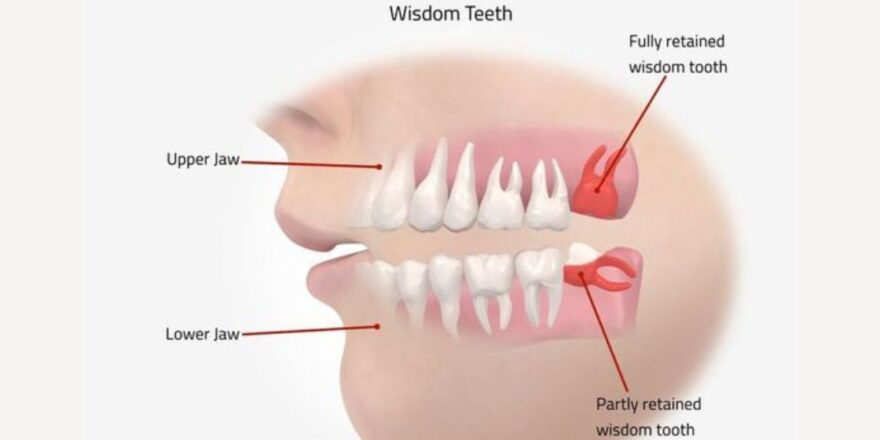As a parent, discovering your child has a cavity, even in a baby tooth, can raise many questions. Given that these teeth eventually fall out, some parents might question whether it’s necessary to invest time and resources into treating them. However, dental services emphasize that filling cavities in baby teeth is critical for supporting both immediate and long-term oral health. Let’s delve into why treating cavities in baby teeth matters, and how parents can approach this in a practical, informed way.
The Vital Role of Baby Teeth: More Than Just Placeholders
Baby teeth, or primary teeth, serve as the foundation for a child’s lifelong dental health. They are not just placeholders but play key roles in:
Speech Development
Proper speech formation depends on healthy teeth, especially during the early years. Baby teeth help with sound formation and articulation, setting the groundwork for clear communication.
Chewing and Nutritional Health
Children need healthy teeth to chew food thoroughly. If chewing becomes difficult due to dental pain or decay, it can impact their diet and nutrition, which are crucial for growth and immune health.
Proper Alignment of Permanent Teeth
Baby teeth maintain the necessary space for adult teeth to come in correctly. If a baby tooth is lost prematurely due to decay, nearby teeth may shift, leading to crowding or misalignment of adult teeth. This can result in future orthodontic needs.
By recognizing these functions, we can see how untreated decay in baby teeth could have long-term consequences on a child’s health and development.
Understanding Cavities: How Do They Form in Baby Teeth?
Cavities form when bacteria in the mouth produce acid, which gradually wears down the tooth enamel. The primary causes of cavities in baby teeth include:
- High-Sugar Foods and Beverages
Sugars from juices, sweets, and even some processed foods can feed harmful bacteria, leading to acid production that wears down tooth enamel. - Inconsistent Brushing Habits
Young children often need assistance with brushing to ensure all tooth surfaces are cleaned effectively. Residual food particles in hard-to-reach areas can lead to cavities. - Baby Bottle Decay
Prolonged exposure to sugary liquids in bottles, especially if given before bedtime, can lead to “baby bottle tooth decay,” affecting the upper front teeth most severely.
These factors are crucial for parents to monitor, and dental professionals can offer guidance on reducing these risks through specific care routines tailored to young children.
When and Why Fill Cavities in Baby Teeth?
For most cavities, dental services recommend early intervention. Treating cavities promptly offers numerous benefits that go beyond addressing immediate decay:
Pain Prevention
Even small cavities can cause pain and sensitivity, which can impact a child’s ability to eat, sleep, and concentrate. Treating cavities early reduces the chance of them growing and becoming more painful.
Preventing Infection
If left untreated, cavities can reach the tooth’s pulp, causing infection. A dental infection can lead to abscesses, which are not only painful but can also affect the surrounding gum and bone tissue, requiring more extensive treatments.
Avoiding Premature Tooth Loss
Cavities left untreated can result in premature loss of baby teeth, leading to potential alignment and spacing issues for emerging adult teeth. Filling cavities supports the longevity of these teeth until they naturally fall out.
Cost Savings
Early treatment can help prevent more complex (and costly) dental procedures down the road. Filling a cavity is typically much less expensive than treating an advanced infection or managing orthodontic complications later on.
Practical Steps for Parents: How to Manage and Prevent Cavities
Establish a Consistent Oral Hygiene Routine
For toddlers and young children, establish a routine that includes brushing twice daily with a small, soft-bristled toothbrush and a pea-sized amount of fluoride toothpaste. Encourage them to brush in small circles and reach all surfaces. Supervising them until they develop good habits independently (usually by age 6-7) is key.
Limit Sugary Snacks and Beverages
Reserve sugary treats for occasional consumption, and avoid allowing children to sip on sweetened beverages throughout the day. Instead, encourage water or milk as the primary drinks and focus on snacks like fruits, vegetables, and cheese.
Schedule Regular Dental Visits
A pediatric dentist can monitor the development of baby teeth and identify early signs of decay, providing guidance on preventative measures. Regular check-ups, starting at age one or when the first tooth appears, can help detect issues early and reduce the risk of extensive decay.
Consider Dental Sealants or Fluoride Treatments
Ask your dentist about sealants, which are protective coatings applied to the chewing surfaces of molars to prevent decay. Fluoride treatments are also beneficial, as fluoride strengthens tooth enamel, making it more resistant to decay.
Encourage a Healthy Diet
Incorporate foods rich in calcium, phosphorus, and vitamin D, which support healthy tooth development. These nutrients are found in dairy products, leafy greens, and certain fortified foods. A well-balanced diet can play a pivotal role in preventing cavities.
What If a Cavity in a Baby Tooth Is Left Untreated?
Leaving cavities untreated can lead to serious, long-lasting consequences:
Tooth Pain and Discomfort
As decay progresses, it affects deeper layers of the tooth, leading to pain that may affect a child’s eating, sleeping, and overall mood. Chronic dental pain can also distract children from learning and playing.
Increased Risk of Infections
If the decay reaches the pulp, it can cause an infection and an abscess. Dental infections can spread to other areas of the mouth and even other parts of the body, creating health risks that may require antibiotics and invasive treatment.
Misalignment of Permanent Teeth
Premature loss of baby teeth disrupts the natural order of tooth eruption. This can lead to permanent teeth coming in crooked or crowded, requiring orthodontic interventions.
How Does the Cavity Filling Process Work for Young Children?
The process of filling a cavity in a baby tooth is typically quick and minimally invasive:
- Numbing the Area
The dentist will apply a numbing gel to the area around the affected tooth, ensuring the child remains comfortable throughout the procedure. - Removing the Decay
The decayed portion of the tooth is carefully removed, leaving only healthy tooth structure. - Filling the Tooth
A tooth-colored filling material is used to fill the cavity, which protects the remaining tooth structure and restores function. The procedure is quick, and children can typically resume their usual activities shortly afterward.
Conclusion
Cavities in baby teeth are more than just a temporary inconvenience—they can lead to pain, infection, and long-term dental issues if left untreated. Dental services emphasize that addressing cavities in baby teeth is essential to maintaining overall oral health and preventing future complications. By fostering good dental habits, maintaining regular check-ups, and taking preventative steps, parents can support their child’s dental health now and set the stage for a healthy smile that lasts a lifetime.
Taking the proactive approach to cavity treatment and prevention not only helps protect your child’s immediate well-being but also ensures a strong foundation for future dental health. For parents with questions about their child’s dental care, consulting with a trusted pediatric dentist can offer invaluable guidance tailored to your child’s needs.


